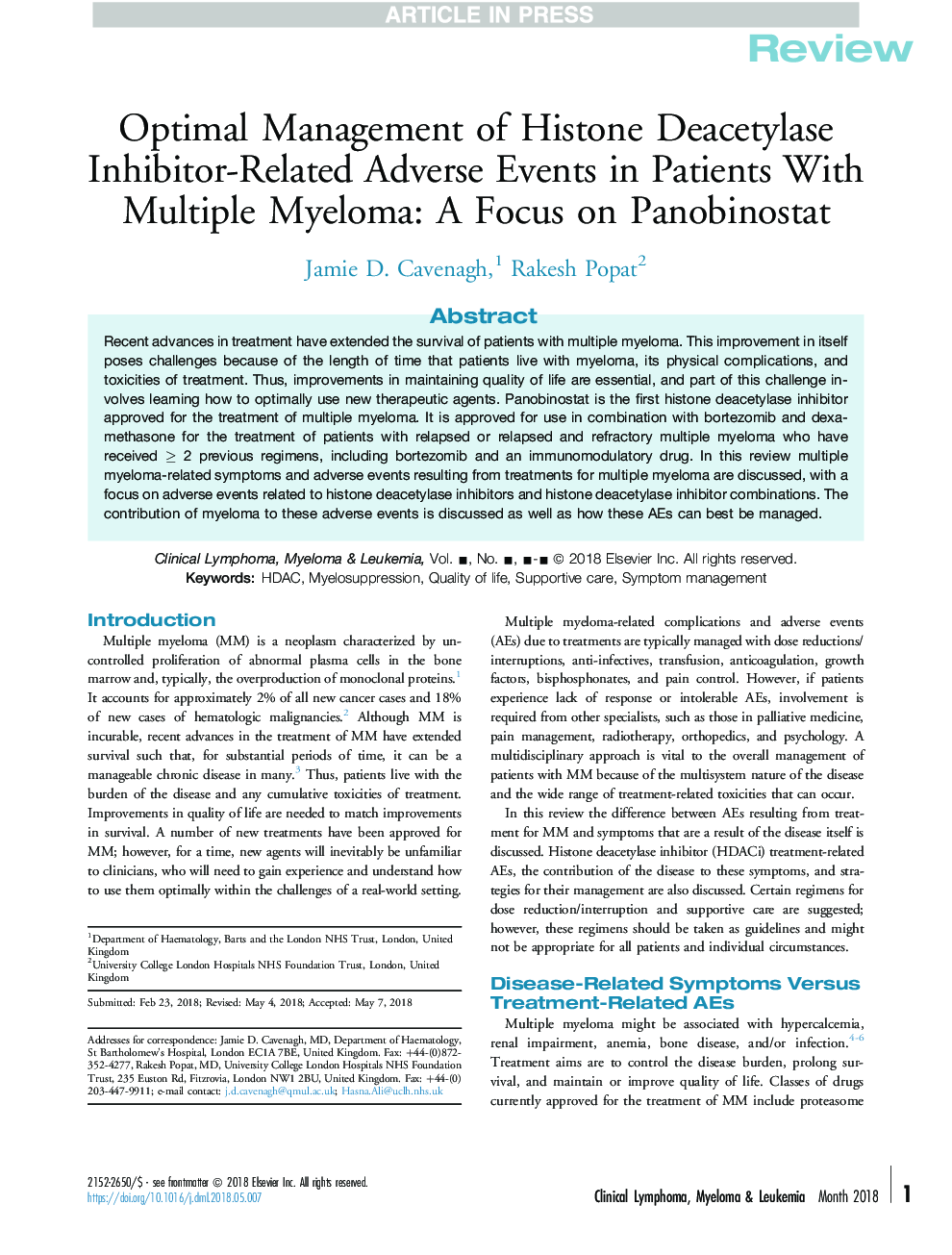| Article ID | Journal | Published Year | Pages | File Type |
|---|---|---|---|---|
| 8615226 | Clinical Lymphoma Myeloma and Leukemia | 2018 | 7 Pages |
Abstract
Recent advances in treatment have extended the survival of patients with multiple myeloma. This improvement in itself poses challenges because of the length of time that patients live with myeloma, its physical complications, and toxicities of treatment. Thus, improvements in maintaining quality of life are essential, and part of this challenge involves learning how to optimally use new therapeutic agents. Panobinostat is the first histone deacetylase inhibitor approved for the treatment of multiple myeloma. It is approved for use in combination with bortezomib and dexamethasone for the treatment of patients with relapsed or relapsed and refractory multiple myeloma who have received ⥠2 previous regimens, including bortezomib and an immunomodulatory drug. In this review multiple myeloma-related symptoms and adverse events resulting from treatments for multiple myeloma are discussed, with a focus on adverse events related to histone deacetylase inhibitors and histone deacetylase inhibitor combinations. The contribution of myeloma to these adverse events is discussed as well as how these AEs can best be managed.
Related Topics
Health Sciences
Medicine and Dentistry
Anesthesiology and Pain Medicine
Authors
Jamie D. Cavenagh, Rakesh Popat,
